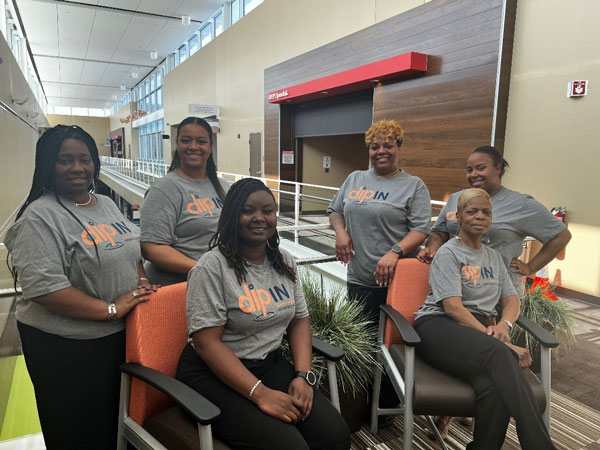By Ellie Hansotte
The DIP-IN evaluation team is excited to share more about our recent paper, “Impact of community health workers on diabetes management in an urban United States community with high diabetes burden through the COVID pandemic,” which was published in the March 2024 issue of Preventive Medicine Reports.
The DIP-IN team wanted to understand how working with the Eskenazi community health workers (not including the neighborhood community health workers) affected the health of their clients. We did this by looking at data like A1C (measure of blood glucose) levels and emergency department visits for DIP-IN CHW patients who were part of the program during its first three years (April 1, 2019 – March 31, 2022).
We compared this to the same data in a comparison group of adult Eskenazi patients with diabetes who lived in areas of the city similar to the DIP-IN areas. Because the timing of the first three years included the first two years of the COVID-19 pandemic, we looked at outcomes before and after the start of the pandemic.
We found that patients who were in the DIP-IN CHW program were able to manage their A1C levels better than patients without CHWs. DIP-IN patients had lower average A1C levels than the comparison group after they were in the program, and they were more likely than the comparison group to have had two or more A1C tests in a year.
This second measure was included because it is usually recommended that patients with diabetes have at least two A1C tests each year to monitor blood glucose levels. DIP-IN CHW patients were also less likely to have Eskenazi emergency department visits and hospital admissions. These results were true both before and after the start of the COVID-19 pandemic.
Our Eskenazi CHWs have talked about how they have been able to address patient needs and told stories about patients with reduced A1Cs in the last DIP-IN quarterly report. The analysis of the data from DIP-IN Eskenazi CHW patients helps us put numbers with those stories so we can share the successes of this program with a wider audience.
We are using this information to support the continuation and expansion of Eskenazi CHWs, help others interested in starting CHW programs at healthcare sites, and figure out the best ways to continue to serve the DIP-IN CHW patients.


